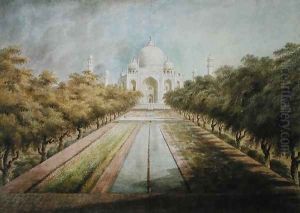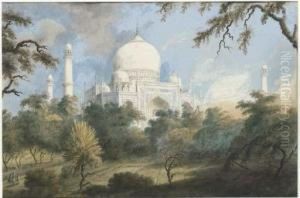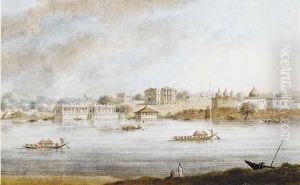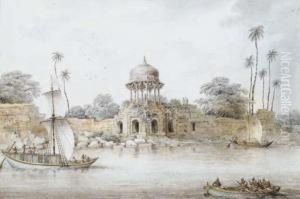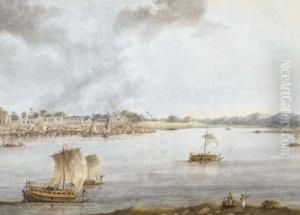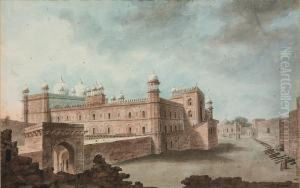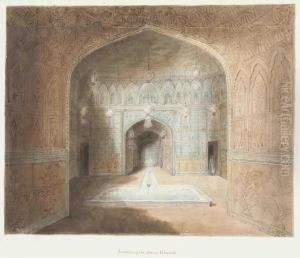Sita Ram Paintings
Sita Ram was an Indian artist who flourished in the early 19th century, known for his detailed and picturesque works documenting the landscapes, architecture, and social life of India. Not much is known about his personal life, including his exact birth and death dates. Sita Ram came to prominence when he worked for Lord Hastings, the then Governor-General of India from 1813 to 1823.
Sita Ram's work provides a valuable visual account of Indian scenes during a period of significant change and British colonial expansion. His paintings were executed in the Company style, a style of Indian painting that developed during the British Raj in the 18th and 19th centuries, characterized by a fusion of European artistic techniques and Indian subjects.
One of Sita Ram's most significant contributions was the illustration of Lord Hastings' journey along the Ganges and Yamuna Rivers, which occurred from 1814 to 1823. Sita Ram's illustrations are notable for their attention to detail, vibrant use of color, and incorporation of atmospheric perspective—a technique less common in traditional Indian painting at the time.
While Sita Ram's artworks mainly served the tastes of his colonial patrons, they are highly regarded today for their historical value and artistic merit. They are considered important examples of early 19th-century Indian art and provide a critical record of the cultural and geographical milieu of India during that era. However, the lack of substantial records about his life beyond his artistic career means that Sita Ram remains a somewhat enigmatic figure in the history of Indian art. His death date and the later years of his life are not clearly documented, and his artistic legacy is primarily preserved through the collections of his works held in museums and private collections.
